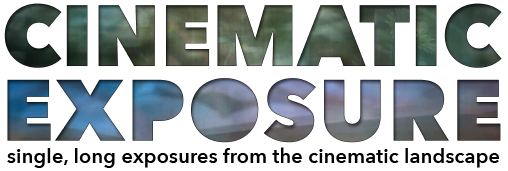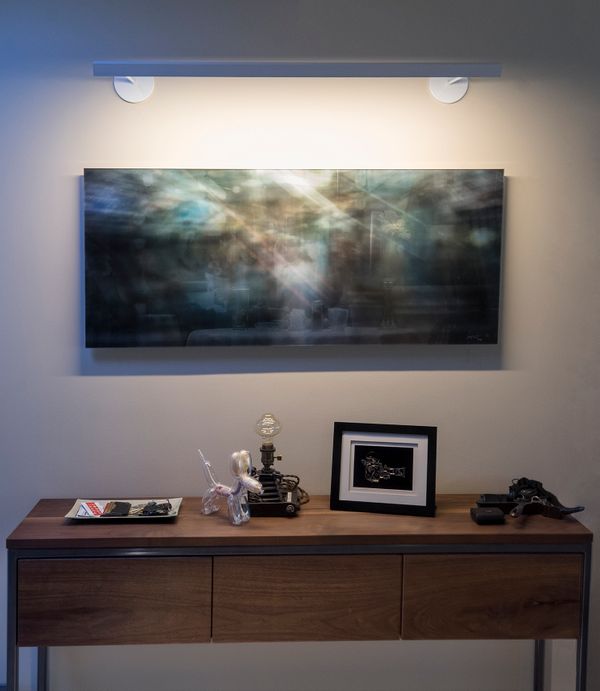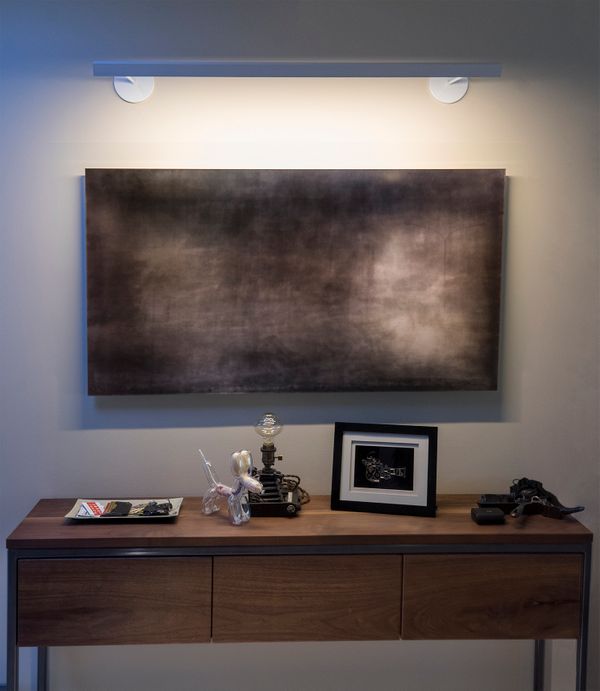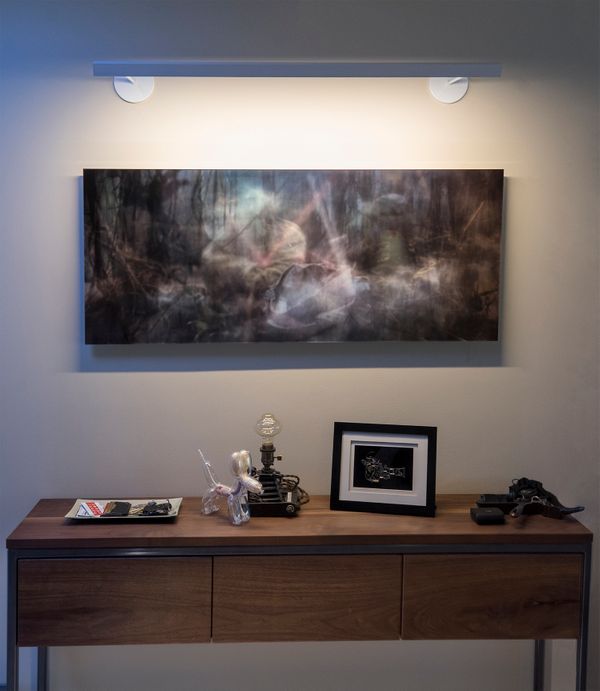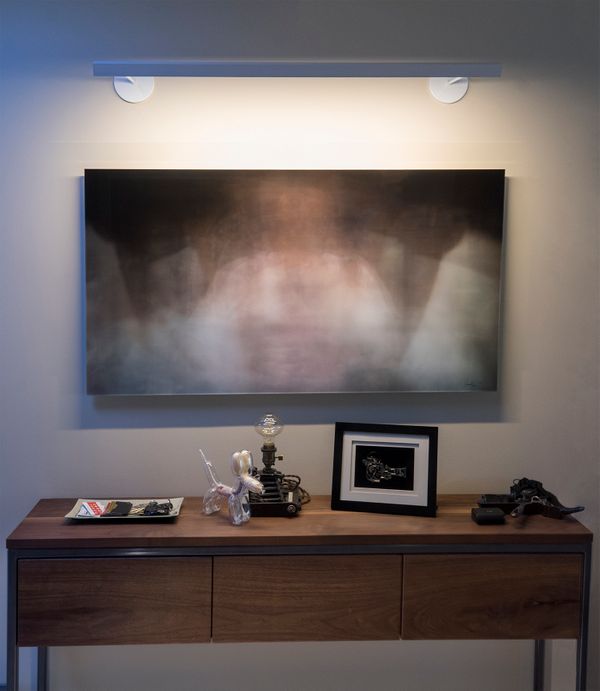The Series & Our Process
What started as a fun exercise with two of our passions, photography and film, has quickly become an obsession. By using the literal light of cinema to paint with, we have come to feel closer to these works we’ve known, in many cases, for most of our lives. The process yields what we believe are beautiful and striking images and reveal a novel way to be in communion with the masters and makers of film.
These images are all single exposures, no compositing or overlays are used to create the final product. Although there is processing that takes place from the RAW camera output, it is not unlike any refinement that would take place in a photo darkroom or with image processing software.
As film lovers and filmmakers, our admiration for movies and the people who make them runs through to our core. Our development of the frames was part form and part function. We chose deliberate segments from films which are iconic or otherwise memorable, but also restricted our ultimate decisions to consider the quality of the resulting image. Whether the exposures were less than a minute or closer to an hour long, the final product needed to feel like the film and conjure the zeitgeist these memories inhabit.
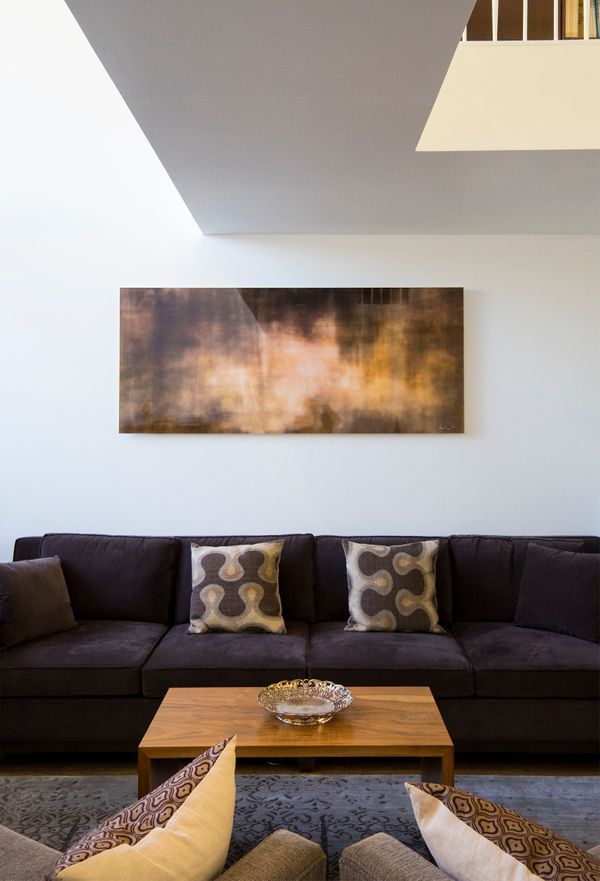
Inspiration & Those Before Us
The process of finding our voice in this series has taken us down a long path of discovery which we try to illuminate and give credit to those before us.
The technique of long exposure has been used in all sorts of settings. It is maybe most commonly used in nature photography to make water look like velvet, but is also frequently deployed by star and sun gazers like Chris McCaw or our friend Robb Rosenfeld in order to capture the moving sun or spinning stars. In modern settings, photographers such as Alexey Titarenko have made ghosts of the masses that inhabit the urban landscape to great effect. Building on that rich tradition there are artists like Hiroshi Sugimoto who took this process indoors and used the light of a cinema screen to illuminate movie palaces, a series which has lasted decades.
However, our first introduction to the impressionistic take on cinema was through an article we saw on Jason Schulman’s recent series, Photographs of Films. It was during our research that we discovered other film related long exposures like that of Sugimoto. That led to the discovery of the digital compositing work of professor Kevin L. Ferguson and showed us a different technique that yielded a similar “mise en scene.” Next we stumbled on the work of “averages” by Jim Campbell, further exposing the rich group of artists making these types of impressionistic photographic works. Finally, albeit not dealing with film, Jason Salavan’s work compositing Playboy Centerfolds and Classic Master’s portraits came through our radar. Needless to say, we were inspired. The idea of being able to mix our love of impressionism and cinema was exciting and our literacy in photography put us in the position to first unmask, and then expand to our own method, the techniques of Schulman and Sugimoto. Since neither of these artists seem to be very open about those processes we put our minds to work and came up with a capturing technique and post flow that yields images we are eager to share. We are excited to contribute another chapter to the rich body of work and philosophies of those artists who have come before us. By being distinctive, and editorial with our decisions to focus on sequences, we want to capture how movies unfold in our memories; not as entire pieces but as fragments and segments that fold flat, neat and beautiful, ready to unpack when they surface into our consciousness.
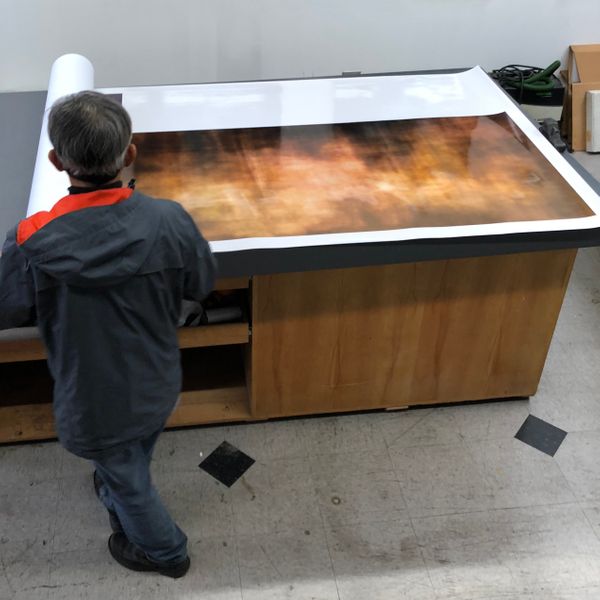
Our Collaborators
Much like the filmmaking process itself, it takes a lot to make a work like this come to life. From other filmmaker friends who lent us equipment and opinions, to our incredible finishing teams at the best labs and framers Los Angeles has to offer. It's with the work of many that we can bring these pieces into the world and onto your walls.
